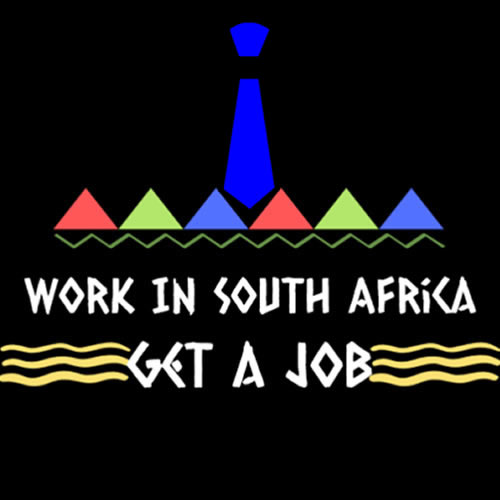At around 31 March 2022, Statistics South Africa will release the long delayed labour figures for the last quarter of 2021. It is likely that the numbers will surpass previous record-high jobless rates .
The third-quarter unemployment figures came in at 34.9%, the highest of the world’s industrialised nations according to Bloomberg data.
Set against the backdrop of rising nationalist fervour that has been stoked over the past six years by the former Johannesburg mayor and now leader of ActionSA, Herman Mashaba, the bad news on the unemployment front will probably be used to justify his — and others — anti-migrant stance.
This narrative, that cheap labour from outside the country’s borders has taken away jobs from South Africans, has been further fuelled by home affairs and employment and labour ministers, Aaron Motsoaledi and Thulas Nxesi, respectively, along with the Julius Malema’s Economic Freedom Fighters. It’s a common refrain in a world shaped by an increasing anti-globalisation sentiment pushed by former United States president Donald Trump.
Although immigrants have been singled out by populists using social media platforms to stir sentiment against migrant workers, South Africa faces what economists call structural unemployment that goes back more than three decades.
The economy has been de-industrialising since the early 1980s as international sanctions took its toll. In subsequent years, the rise of Asia and China as a global manufacturing hub has further curtailed the country’s ability to create low and unskilled work. Manufacturing has the highest job multiplier of any sector.
With GDP growth expected to come in at 2.1% this year, according to the treasury, and at an average of 1.8% over a three-year period, job growth will remain a struggle.
Nxesi recently introduced the draft National Labour Migration Policy and Employment Services Amendment Bill for public comment.
The policy will introduce quotas on the total number of migrant workers with work visas that can be employed in the country’s various sectors, particularly agriculture, hospitality and construction.
The department of home affairs said it was reviewing the Immigration Act, the Citizenship Act and the Refugees Act to ensure alignment.
“The Home Affairs Border Management Authority is also getting into action to secure porous borders and to allow for the orderly movement of people and other nationals across ports of entry only,†the department said.
What the populist noise will fail to acknowledge is the role that immigration has played in the creation of the South African economy and especially Johannesburg, the City of Gold, since the end of the 19th century.
“South Africa was built not on gold and diamonds alone but on the availability of cheap black labour,†said Phakamisa Ndzamela, the author of Native Merchants, adding that the mining industry has always relied on migrants particularly from Basutoland (present day Lesotho) and Mozambique.
“Those guys worked very hard and they continue to work in our mines, they add to the productivity of the economy. Even post 1994 you cannot imagine the productivity in South Africa’s mining sector without talking about migrant labour.â€
The discovery of gold on the Witwatersrand in 1887 led to a flood of migrant labour from not only South Africa’s immediate neighbours and the rest of the continent, but also from China, Europe and the US to fulfil the labour demands of the time. Tents were erected, which would later be replaced by brick buildings, and the city of Johannesburg was founded.
It was the discovery of gold and, earlier, diamonds that would prove to be the spark to the industrialisation of South Africa. Immigrant labour played an integral role, perhaps best captured by the Hugh Masekela classic song, Stimela.
The song captured the train’s (stimela) journey from the hinterlands of the country and neighbouring countries such as Lesotho, Malawi, Mozambique to Zimbabwe to collect workers and take them into the deep gold pits that surround the city of Johannesburg. The mining industry, therefore, not only shaped the economic institutions in the country, but also the social relations between South Africans, their Southern African counterparts and immigrants from Europe.
The number of migrant labourers in the deep shafts of South African mines has been decreasing over the years, with the Minerals’ Council saying migrant workers currently make up about 10% of the 451 427 estimated national mining workforce.
The majority of Indian South Africans are the descendants of indentured workers who were brought to the then province of Natal to work in sugarcane fields at about the same time as the mineworkers and fortune hunters from Australia, Europe and the US descended onto the country’s mining towns, mainly Kimberley and, later, Johannesburg.
The growth of industries meant that more labour needed to be sought. The local natives were not interested in the appalling working and living conditions on the mines, which meant labour had to be sourced elsewhere. By the year 1899, there were 100 000 migrant labourers in the gold mines of the Witwatersrand.
In the 19th century, Jews worked as itinerant merchants and small businesses later developed into large retail chains, according to the Board of Jewish Education.
“You cannot imagine the retail sector without migrant Jews,†said Ndzamela.
The Ackerman family are Jewish migrants who arrived in 1892 from Lithuania and have amassed great wealth and success in business.
“By February 1892, Meyer Ackerman was a naturalised citizen of the Cape Colony and an established ostrich feather buyer, one of around forty thousand refugee Jews who arrived in South Africa from Eastern Europe up until the time of Union in 1910,†reads an excerpt from Raymond Ackerman’s biography, Hearing Grasshoppers Jump.
Gus Ackerman was Raymond’s father and he founded the Ackermans retail chain while Raymond founded the Pick n Pay grocery retail chain. Other companies such as Anglo American, OK Bazaars and Standard Bank were also founded by migrants.
With World War II, when Nazi Germany swept through Europe and was later defeated, German Jews fled to South Africa seeking refuge.
“Before and after the war there was a new influx of immigrants from Europe into South Africa who were mainly Jewish refugees running away from Nazi oppression,†said Omar Badsha, historian and chief executive of South African History Online.
The 2022 draft National Labour Migration Policy put out by the department of labour speaks of the “two-gate policy†that shaped immigration to South Africa in the 19th and 20th centuries.
The front gate is explained as the one that welcomed people who corresponded to the criteria of attractiveness defined by the governing minority. It was compulsory to be “readily assimilable†in the white population of the Republic until 1986. The back gate served a double function: preventing unwanted migrants from entering and settling while allowing cheap and relatively docile labour in for temporary periods.
An important caveat to the South African migration issue is that although immigrants arrived to work in mines, they historically did not have the right to settle permanently. Permanent status in South Africa was the preserve of white immigrants, primarily from Europe, North America and, later, from newly independent African countries such as Zimbabwe and Mozambique.
During the discovery of diamonds and gold there was palpable excitement and people from Europe and European colonies came to Africa, said Badsha. But, because “they were white they were not restricted in the way that black migrants were and could settle in the cities and towns around the mines and not in hostelsâ€.
With a struggling and increasingly digitising economy, job creation is going to prove difficult. Talks about the introduction of a basic income grant stem from the inability to employ an urbanising population. Expectations are that more than 70% of the population will be living in cities by the year 2030, with competition for a shrinking jobs pool only increasing further. It is a place where opportunists in the political space and an ANC that is losing popularity will look to take advantage. As the tensions stir, immigrants from the African diaspora are once again likely to pay the highest price.




